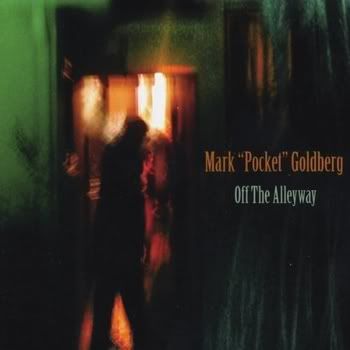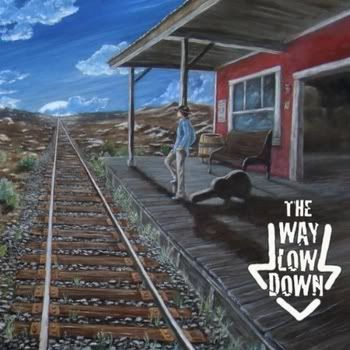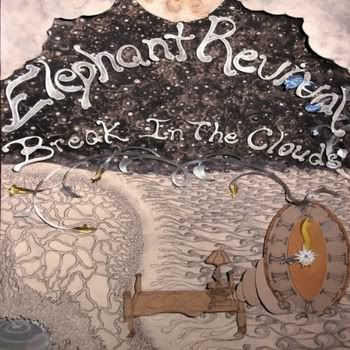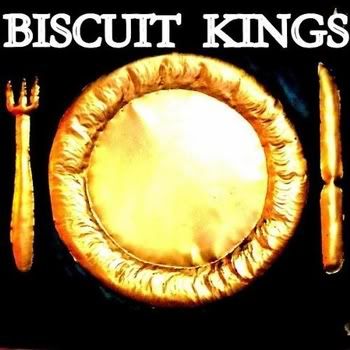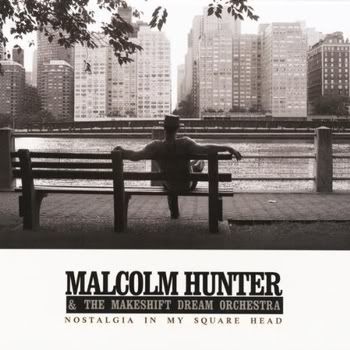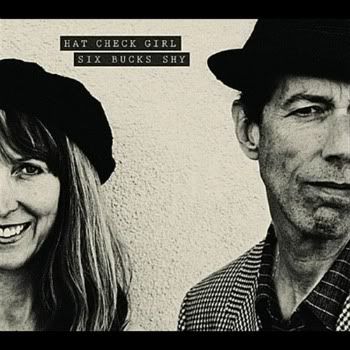
[purchase]
It would be easy to report that Hat Check Girl is the duo of Peter Gallway and Annie Gallup. That’s them on the album cover, and that was true of their debut album, Tenderness. But the inside cover of the new album has three musicians listed in bold type, and guest musician Mark Dann listed in plain type. The new “member” is drummer Jerry Marotta, who also co-wrote all but two of the new album’s thirteen songs. Yes, that Jerry Marotta! Liner note freaks like myself will know the name from Marotta’s work with Peter Gabriel and others. You might expect that Marotta would add punch, and that his presence here would mean that this album rocks out. There are times when his drumming adds a pulse that really propels this music, as in What Hemmingway Said, but it is never over the top. Marotta has a talent for creating texture with his playing, and that is often more to the point here. Marotta’s contribution is sometimes little more than a subtle line played with brushes. On top of that, Gallup and Gallway’s guitar lines intertwine like a caress, as do their breathy vocals. Dann adds bass and/or keyboard lines with a light touch. It all adds up to the most sensual-sounding music I have heard at least since Chris Isaac’s Wicked Game.
This sensuality is very much to the point. Six Bucks Shy is a collection of songs about heated moments. It can be the delicious passion of a forbidden tryst or the adrenaline rush of an actual crime. The songs present the passion of stolen moments, when voices can not be raised for fear of discovery. The writing does something rare. I admire songs which tell stories, but also those which capture the complex mood of a moment in time. These songs do both. August Sin sounds like the heat of the day it describes, and the tryst it presents is described in all of its languid passion. But the back story of how these lovers came to be here is also sketched in lightly. Getaway Car captures the rush of a minor heist, but also fills in the back story of the two characters. Echo Echo uses something as insubstantial as a radio signal floating in the ether to tell the tale of a tender parting in wartime. Cigarette Girl describes the push and pull of a flirtation, while it gets inside the hearts of its two characters to show us what each risks in this meeting. All of these and more are wonderfully economic pieces of writing. But the marvel of the bunch is Leave Most of It Out. Annie Gallup’s narrator talks around the real subject of this song. She reminisces about her now gone husband, and describes how she is raising their children. Only gradually, you realize the part she can not bring herself to put into words. The husband died in the World Trade Center on that awful day in 2001. No graphic description of that day could convey the sorrow as eloquently as this woman’s silence.
I would be leery of hearing covers of these songs. Gallup, Gallway, and Marotta have crafted eloquent gems of songs, and the performances smolder with barely contained heat. It would be all to easy to do to much with these songs, or too little. Hat Check Girl hits everything exactly right.
Hat Check Girl: Getaway Car
Hat Check Girl: What Hemmingway Said
******************************************************
Blog business: This will be my last full album review here for the time being. I have become involved in some things, and I find that this kind of post requires me set aside a large block of time that I am finding it increasingly difficult to find. I will be going back to spotlight posts and single-song coverage. On the plus side, I am hoping that this will mean that I can get back to posting far more often than I have been lately.


